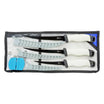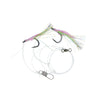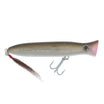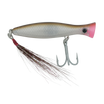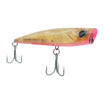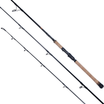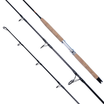Tarpon Trolling Techniques

Trolling for tarpon is relatively uncommon outside of the northern Gulf of Mexico, but can be very effective at locating scattered fish in open water. With the aid of advanced side scan technology, you can present baits in multiples depths while covering a wide area, looking for groups of fish suspended and showing limited signs of surface activity. Here in Southwest Florida a handful veteran tarpon guides like to impart a tuna style trolling method relying on a simple modification to Power Pole shallow water anchors. The device and technique may seem a little farfetched, but with a little practice it can become a productive method to employ for scattered fish in deep water.
For anglers who may not have access to Power Poles on their vessel, I’ll also cover a couple inexpensive tips for getting your baits down on the troll.
Several rods can be deployed using this method. For surface rods, utilizing a 4oz - 6oz Pro Tail Paddle, stout conventional tackle is recommended. When deploying baits on the Power Pole fat line clip your heavy action tarpon rod will work just fine. If you’re deploying a down rigger weight, conventional tackle is recommended as well.
Fishing The Spread: Baits on the surface should be counted back in five second increments (five seconds back will be fishing two to three feet deep) while a bait at twenty seconds is probably swimming about six to eight feet deep. When deploying baits on the Power Pole clip, let them back for about five seconds, giving them about thirty to thirty five feet of line off the stern. Attach them to the outrigger clip and extend the Power Pole three to five feet deep. The same five second, thirty foot length shot of line should be used when attaching to a down rigger weight as well.
Speed: This spread is trolled very slowly! Speed is crucial for success and many anglers prefer to use a trolling motor to finely tune the trolling speed. The ideal speed will be about 1.5 - 2.25 mph, just enough for the paddle tail to have a consistent thumping action. Increasing speed will not improve you catch using this technique!
On A Bite: When a bite occurs, allow the fish to set the hook on itself using the rod and drag to drive the hook home inside the jaw. Have a second angler begin clearing rods while another angler begins to fight the fish. Some anglers prefer to leave lines in the water during a hookup, as odds of a second fish coming in for another lure are pretty good.




















